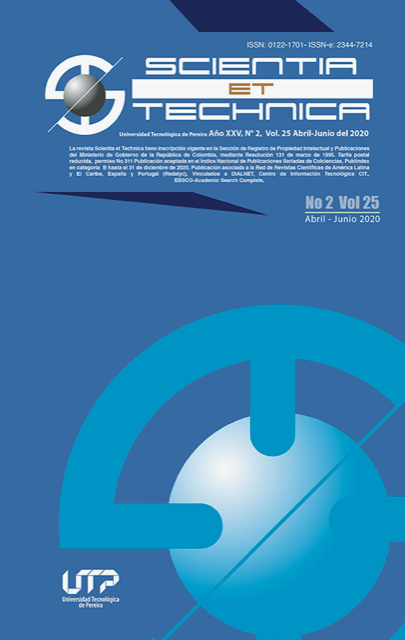NAOMOBBY, development of a computer vision and robotics-based software tool to support rehabilitation in upper limb physical therapies
DOI:
https://doi.org/10.22517/23447214.23581Keywords:
Natural user interface, Kinect sensor, NAO robot, physical therapiesAbstract
Nowadays, 21% of Colombian population, and the 35% of the population in Cauca Valley have limited movement of body, arms, hands or legs. Then, the quality of life of these people is highly affected, since they have limitations in daily living activities. Physical rehabilitation therapies allow the restoration of movement and maximum functional capacity in people. Successful physical therapies depend on empathy and motivation with the rehabilitation process (RP), then the more empathy of patients with the RP, the more patient willingness regarding the rehabilitation therapy. Motivation is crucial in rehabilitation, and it is used as a fundamental rehabilitation out-come. This work has the aim to present the software tool called NAOMOBBY to support physical rehabilitation therapies of shoulder, elbow and wrist joints. NAOMOBBY includes a GUI for therapist, a Kinect sensor and an interactive humanoid robot NAO to increase the patient willingness regarding the RP. NAOMOBBY includes the following modules: configuration/management, movement reproduction, and results report using GAS methodology. NAOMOBBY was tested using quantitative and field tests. Quantitative tests measure the error in the Kinect sensor of the NAO robot joint motions to bring users a suitable feedback. Quantitative results were obtained using three basic functional motions. The mean square error for these three motions were 0,373%, 0,096%, and 1,129% respectively. Field tests were conducted at the SURGIR neuro-rehabilitation center using 3 physiotherapists who considered the NAOMOBBY software tool as a novel, easy to use, and that encourage patients to perform the physical therapy.
Downloads
Downloads
-
Vistas(Views): 360
- PDF Descargas(Downloads): 284
Published
How to Cite
Issue
Section
License
Copyrights
The journal is free open access. The papers are published under the Creative Commons Attribution / Attribution-NonCommercial-NoDerivatives 4.0 International - CC BY-NC-ND 4.0 license. For this reason, the author or authors of a manuscript accepted for publication will yield all the economic rights to the Universidad Tecnológica of Pereira free of charge, taking into account the following:
In the event that the submitted manuscript is accepted for publication, the authors must grant permission to the journal, in unlimited time, to reproduce, to edit, distribute, exhibit and publish anywhere, either by means printed, electronic, databases, repositories, optical discs, Internet or any other required medium. In all cases, the journal preserves the obligation to respect, the moral rights of the authors, contained in article 30 of Law 23 of 1982 of the Government Colombian.
The transferors using ASSIGNMENT OF PATRIMONIAL RIGHTS letter declare that all the material that is part of the article is entirely free of copyright. Therefore, the authors are responsible for any litigation or related claim to intellectual property rights. They exonerate of all responsibility to the Universidad Tecnológica of Pereira (publishing entity) and the Scientia et Technica journal. Likewise, the authors accept that the work presented will be distributed in free open access, safeguarding copyright under the Creative Commons Attribution / Recognition-NonCommercial-NoDerivatives 4.0 International - https://creativecommons.org/licenses/by-nc-nd/4.0/deed.es license.



